How to identify LED strip type? With the lighting industry growing rapidly day after day, several new lighting options are getting released year after year, LED technology is one of the increasingly popular major lighting alternatives that has dominated the industry for ages.
As LEDs get advanced daily it’s important to be able to tell the difference among the LED varieties available, this article delves into the realm of LED lighting and explores everything you need to know about this futuristic technology.
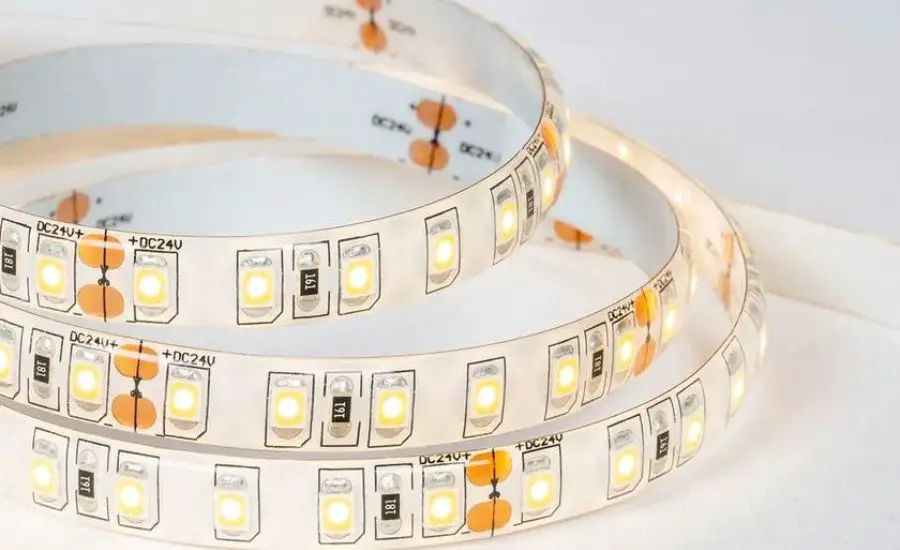
Led lighting: overview
Light Emitting Diode is a type of diode that converts electrical energy into illumination. A diode is an electrical component with a single direction of operation. A LED is an electrical equipment that emits light and allows current to pass through it in a single direction.
The description of most LED strips has a 4-digit number, like 5050 or 2835. The number indicates the size of the LED chips. 5050 LED chips, for instance, are 5.0 mm in width and 5.0 mm in height.
Though most LED chips of the same size share comparable traits, all chips can’t be equal. Performance differences may exist between LED chips made by different makers.
LEDs are getting more advanced by the day with new designs and features, from the RGBWW to the addressable LED strip.
LEDs are similar to miniature light bulbs; the only differences are that LEDs use far less energy to illuminate and are far more effective at delivering light outputs.
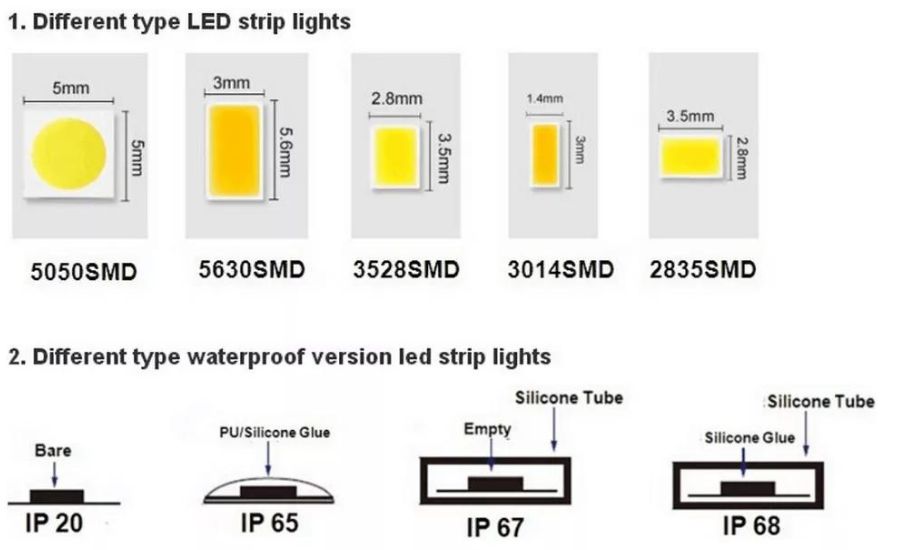
Addressable LED strip: overview
An addressable LED strip or pixel LED strip is a type of LED strip that has an integrated circuit (IC) that enables you to control each LED or group on the strip independently, enabling the creation of dynamic lighting patterns.
Considering how addressable LED strips work is very straightforward, the precise control of each individual LED part’s color and brightness is made possible by the integrated circuits in each LED on the strip, which interface with the control circuit.
They are utilized in a wide range of lighting applications, including DIY projects, retail displays, general lighting, and stage lighting.
Using an addressable LED strip light is an amazing way to add dynamic lighting to any room. They provide an extensive range of customization choices and are very simple to install.
The addressable LED strip light offers power over each individual LED, and the amazing lighting gives you precise control over any fantastic lighting design you have in mind, with addressable LED strips if you can imagine it you can create it. From awesome light shows to fantastic animations, the options are endless with these lights. The amazing varieties of addressable LED strips are explained below.
To check your LED type, verify if it has an IC or not. IC comes in two varieties internal and external. It’s an addressable LED strip light if it has an IC. You should also inspect the cable if it has a signal data cable, then it is an addressable LED strip light. Below are the common types of addressable LED strips:
- WS2811: This addressable LED strip chip is very popular and highly efficient. WS2811 addressable LED strips are utilized in numerous applications and can manage motors.
- WS2812: These addressable LED strips are very common in RGB LEDs which have red green and blue LEDS, these LEDs of addressable LED strips can produce white light when they have the same brightness.
- WS2813: This addressable led strip chip has a greater refresh rate and is brighter than the WS2812. The addressable led strip type is also more costly than WS2812B, it is not as common as WS2812 because it is more expensive.
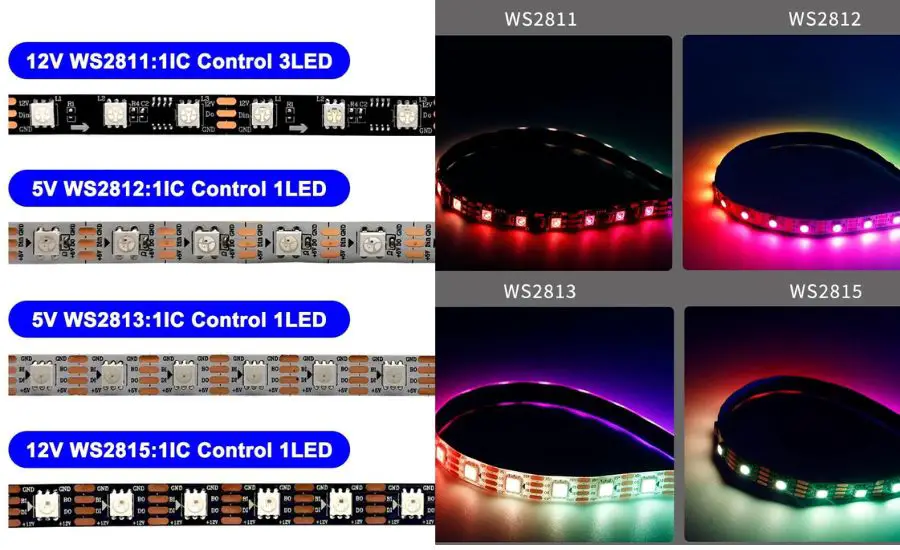
Identifying other types of LED Strips
Though addressable LED strips are undoubtedly one of the most common and widely available LED strips, there are other amazing options to choose from, below are other common LED strips that are excellent and highly efficient.
Single-color
This is usually a a basic white LED strip, it provides adequate illumination for several settings and it is very common as room lighting. It is single-colored, usually cool white and it is also commonly used for commercial purposes.
RGB LED strip
This LED has the three primary color LEDs. You could combine the three fundamental colors to create almost any color by using a control method or a specialized controller to independently control each color channel, it is very common as it is one of the most affordable.
RGBW LED strip
Instead of the usual three, this amazing strip combines the three primary colors and white, making four LEDs, the purpose of the fourth channel is to create more amazing effects and have pure white light.
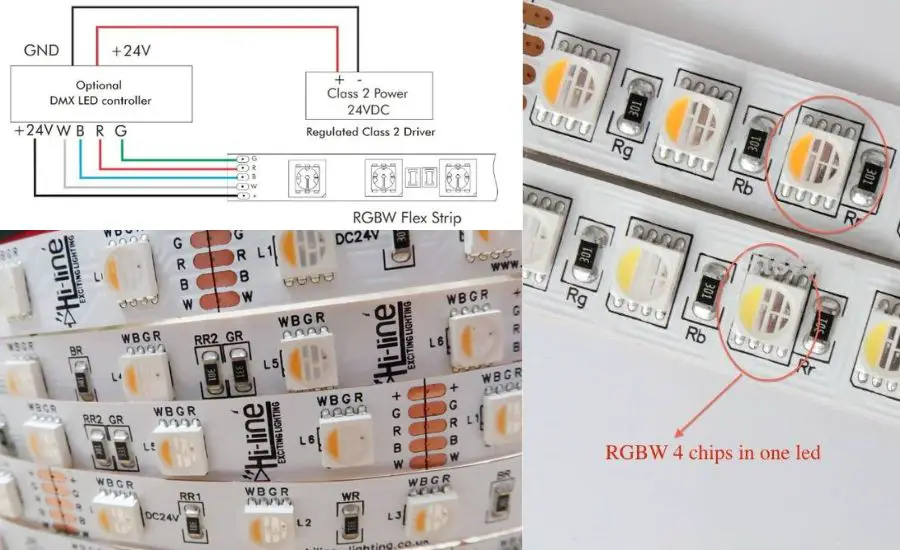
RGB+CCT strip
The chips can vary in color temperature, from cool white to warm white light. Correlated color temperature, or CCT simply describes different shades of white light at different color temperatures together.
This wonderful strip takes this amazing lighting a step further by providing an extra channel for warm white. You get to choose any shade chip type of white you want, from warm white to cool white.
The degree of color temperature is expressed in Kelvin (K) degrees. The cool white, sometimes referred to as “daylight white,” is any temperature greater than 5,000K.
Amazing features of LED technology
LED technology has become dominant in the lighting field for a lot of reasons, LEDs offer several features that put them a step above other alternatives, below are the features of LED you should consider when selecting.
Light color
Colored LED strips can provide excellent and high brightness, mind-blowing lighting effects, and accent lighting in situations where you need a punchy, saturated color effect. They also come in all the visible spectrum colors. An RGB addressable LED strip is a very common option, they can have red, green, and blue LEDs and provide amazing effects like you have never seen.
Color rendering index (CRI)
The degree to which colors appear true under a given light source is known as color rendering. Colors may appear distorted, faded out, or indistinct under a low CRI LED strip. High CRI LED lighting allows items to look as they would in perfect lighting conditions, like natural daylight.
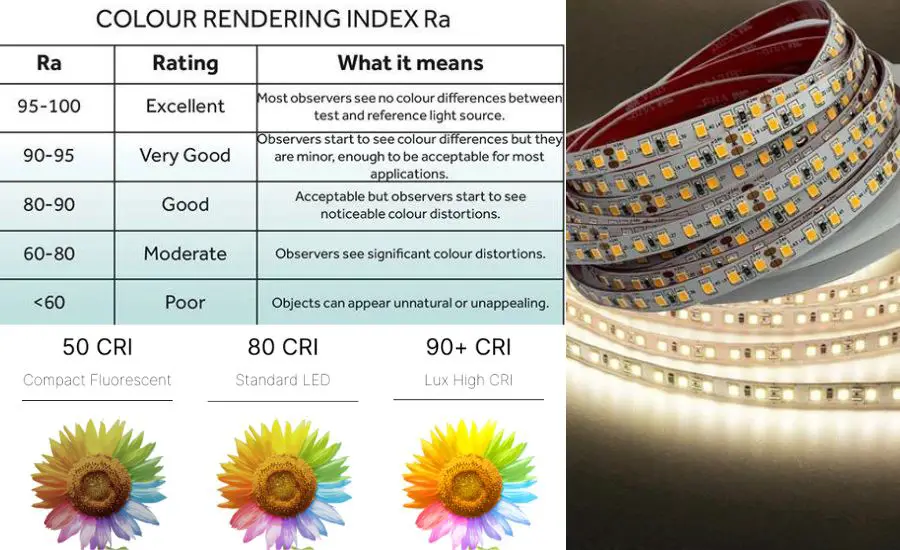
Density
The density of an LED strip is another important factor to consider, it describes the gap between each LED and the chip’s mounting on the circuit board. LED count is the total number of LEDs installed on an LED strip light while LED density is the number of LEDs per foot or meter.
These are fundamental values that will eventually indicate the exact amount of LEDs you will receive per unit length.
Since the fundamental elements of an LED strip that produces light are its mounted LEDs, the number of these elements is crucial to determining the total light output of the LED strip light.
An LED strip’s overall light output is just the total of each LED’s light output across the strip. Therefore, the overall amount of light output directly depends on the LED density of one strip.
As the LEDs per meter increase the light per meter also increases, this is why the LEDs per meter play a major role and why density is very important when considering LED technology.
The largest issue that could result from an inadequate LED density is probably improper light distribution. Each or more LEDs on an LED strip can provide a dotted effect, because each LED is a separate “point source,” depending on how it is mounted.
The LED density has a major impact on the performance of the LEDs, other important factors like the thermal efficiency and drive current determine the longevity of the LED. Several variables resulting from variations in LED density may have an indirect impact on the lifespan of LED strip lights.
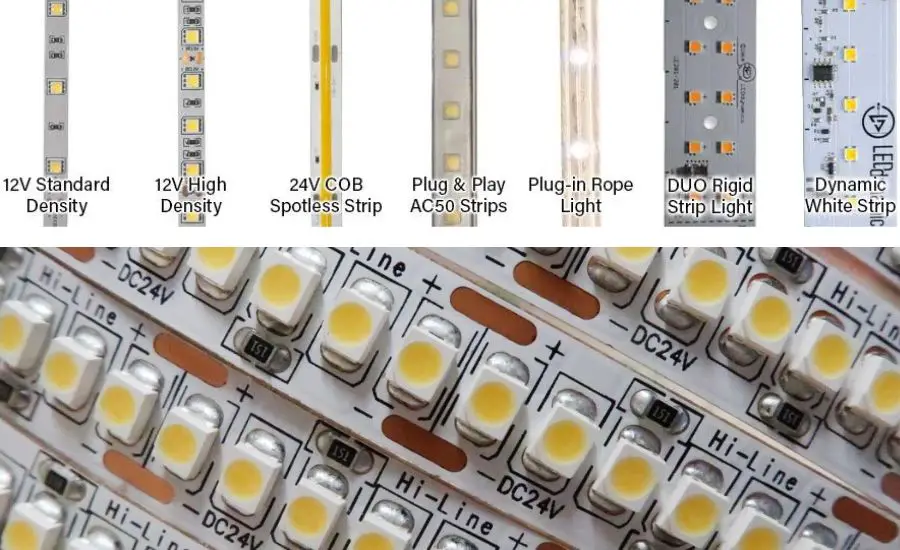
Voltage
Voltage is another underrated yet important factor when considering LED strip lights, The most common voltage in LED strips are 24V LED strips and 12V LED strips, they are both excellent in performance. Because 12-volt lights may be used both inside and outside, common uses for them are in driveways, bedrooms, and kitchens.
But keep in mind that when putting LED strips outdoors, you need always invest in the proper weather protection and fittings. The dependability of a 12V strip is its major benefit. With this voltage option, you can get the same amount of light as an incandescent bulb for 20% less money and less energy.
Though 12V LED strips are fantastic I recommend getting 24V LED strips, if the two products have the same power ratings, 24V LED strips should be able to support double as much length as a 12V LED strip light.
I recommend getting a current-limiting device, it is necessary to keep the LED strip light from becoming overdriven.
The gadget extends the life of the lights by controlling the current. Without the device, the electrical components of the LED lights will alter and start to heat up, which will cause brightness fluctuations and ultimately broken LEDs.
Additionally, you should use a power source that is compatible with the strip’s operating voltage. For instance, using a 12-volt LED strip with a 24-volt DC power source is a very bad idea and could even destroy the lights.
Voltage drop is another common issue that occurs when using LED technology, it refers to the decrease in voltage from the overall voltage across the entire circuit of the power source.
The use of the wrong kind of connector between the power supply and the LEDs is a common cause of voltage loss.
In addition, the length of the LED strip light and the thickness of the cable also play a role in voltage drop. A voltage drop will eventually occur from thin cables, therefore make sure the long cable you use is likewise very substantial.
Power
A gadget may have a low voltage yet still draw a large current and consume a lot of power because the power of an LED light is dependent on voltage and current. This makes the power requirements a crucial factor to consider when choosing LED lighting for any application.
If the cables need to pass through walls I recommend purchasing a class 2 power supply, the maximum power output of a class 2 power supply is 96W at 24V. If a single power supply divides its power into several outputs, it can surpass the limit, this is why a class 2 power supply is the all-in-one best alternative.
You must understand how much current and voltage your lighting projects require to maintain a bright, power-efficient LED tape.
You can select a power supply after you understand these two factors. Most LED strips require less electricity and are more energy-efficient than most other alternatives due to their low voltage and relatively low current.
The main point is that greater power does not necessarily guarantee more brightness and “larger is not always best”.
IP Rating
Two numbers are typically used to signify an IP rating for example IP66 or IP65, the first number denotes the degree of protection against solids, and the second number represents the degree of protection against liquids.
The environment in which the addressable LED strip light will be used should be taken into account when selecting the IP grade.
The IP plays a very important role as it determines the longevity of your LED strip, the IP you will go for should depend on the location you intend to install your LED strip.
If you intend to put the LED strip outside or in a water-prone area I advise using an IP67 or higher grade for improved waterproofing.
PCB width
LED strips come in a wide range of widths. To make sure your strip fits inside the profile, you must match it to the chosen LED channel while considering its width.
Waterproof rating
A lot of strip lights available are not water resistant, this kind of strips are meant to be utilized indoors in dry conditions because water can damage them. There are also a lot of water-resistant varieties you can go for, these types are better and are safer in water-prone areas.
Addressable LED strip vs. regular RGB strip
All of the LEDs in a regular RGB LED strip are the same color and brightness, and they will all display the same effect because the LEDs are linked collectively and controlled as a single unit.
With addressable LED strips, each unit can be individually controlled thanks to a specially designed microcontroller. It implies that every LED can be configured to have a distinct hue and brightness and they can be made to display different effects.
Nature of installation
The setting you have planned for the light is one of the most crucial considerations when selecting addressable LED strips. For instance, if the setup will be in a damp environment, I recommend going for an LED strip that is water-resistant.
If direct sunlight will be present, I recommend going for one that has been approved for outdoor use; this will help you ensure the longevity of your lights.
Another important consideration here is the length of the strip, if a long LED strip is needed, you should confirm that the product you’re choosing can handle that length.
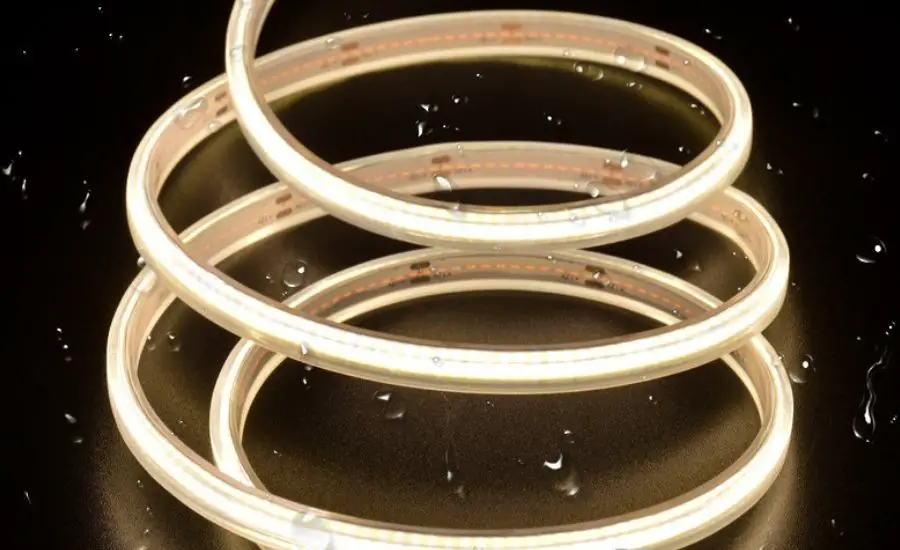
FAQ
How do I know what LED strip I have?
If you want to determine the type of LED strip you have checking if it has an IC is the best way, an IC shows that it is an addressable LED strip.
How do you identify LEDs?
LED package types are designated by four-digit codes such as 3528, and 3030, the first two numbers are the width while the last two are the length.
What are the different types of LED strip lights?
LED strip lights are fantastic lighting options and they come in different types including RGB warm white, RGB, and the addressable LED strip.
How do I know if my LED strip is 5050?
In a 5050 LED strip light there is an inscription “SMD5050” on the strip, the numbers that come after the SMD are the size of the LED chip.
The bottom line
There are several types of LED strips all with their features and cons, considering the basic features and your personal preferences is essential when selecting LEDs. By using this article as a guide you can easily differentiate between different high-quality LED strips and choose the perfect one based on your preferences and its purpose if need be.

My strong expertise is illuminating spaces. With a keen eye for detail and a passion for transforming environments through lighting, my dream is to leave indelible mark on the world of light design. Below are few facts of my biography, highlighting career and hobbies. Click here to contact me.
